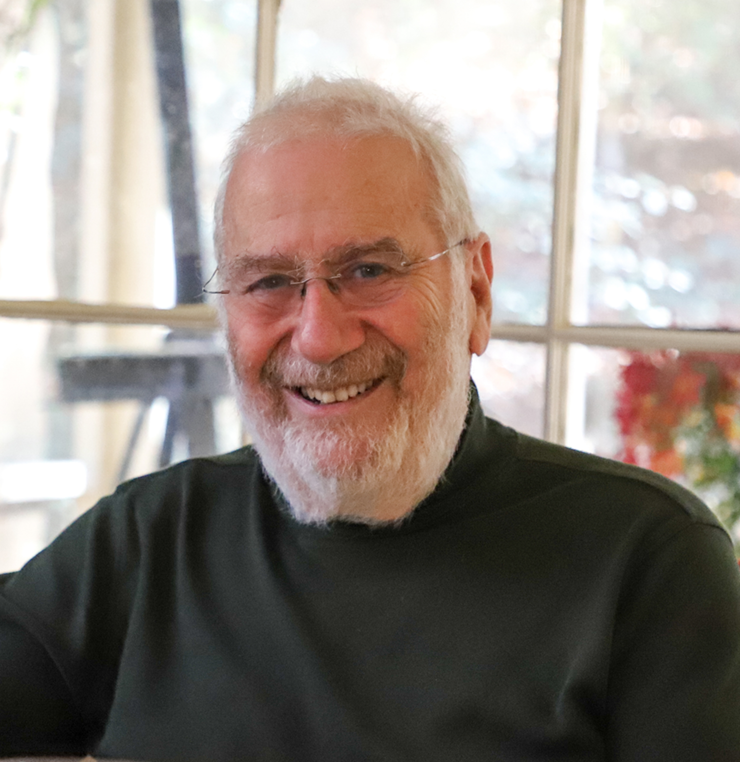Purdue Psychological Sciences propelled alumnus to over three decades of award-winning research

Abraham Tesser
Written by: Tim Brouk, tbrouk@purdue.edu
When Abraham Tesser (MS ’65, PhD ’67) was about to embark on his graduate studies in the Purdue University Department of Psychological Sciences, his mother, a New Yorker who had never been to Indiana, was worried.
“My mother packed Campbell’s soup for me, thinking you’re never going to be able to get that in Indiana,” Tesser recalled with a smile.
Happily, West Lafayette did have grocery stores that carried such products in the early 1960s. More importantly, it had a psychology program that was welcoming to new ideas; new faculty members; and young, student researchers like Tesser.
Since then, Tesser has gained an impressive list of accolades: He earned the 2010 Distinguished Scientific Contribution Award and the 1999 Donald T. Campbell Award from the Society of Experimental Social Psychology. Tesser was also awarded the National Research Service Award and Senior Research Scientist Award from the National Institute of Mental Health, among other grants. He was also the president of the Society for Personality and Social Psychology in 2000 within the American Psychological Association (Division 8).
His work at Purdue gave him the credentials for a tenure-track faculty position in the Department of Psychology at the University of Georgia, where he spent most of 32 years researching and teaching social psychology before his retirement in 1999. And that career earned him a 2025 Purdue College of Health and Human Sciences Distinguished Alumni Award and his first trip back to West Lafayette since the early 1970s.
Today, Tesser still resides in Athens, Georgia, and has found a new passion in the local arts scene. He helped establish the longstanding Athens Jewish Film Festival, and he is an accomplished furniture designer and builder.
What was the Purdue Department of Psychological Sciences like in the early 1960s?
I was interested in psychoanalytic theories when I arrived to study clinical psychology. Not a good fit! In those days, clinical psychology at Purdue was strongly influenced by behaviorism and promulgating behavioral therapy. The mere suggestion that psychoanalytic theory had some merit or interest value was quickly dismissed. Of course, the science seemed to validate the strength of the behavioral approach. It simply did not ignite an intellectual spark for me. So, I began looking for something else.
Purdue had strengths in statistics and psychometrics, and I found those areas interesting. But I was still looking for a substantiveapproach to understanding how and why people do what they do. My first course in social psychology provided that. It was intellectually seductive. Cognitive dissonance theory was making its debut, and I found it immensely interesting. Also, the methods were often unique and appealing. Researchers were not only asking people what they would do in a particular circumstance; they were creating different social situations in the lab and observing what people actually do. The social psychology program at Purdue was in its infancy during my tenure; I was the second person to graduate in social psychology.
How did social psychology grow during your academic career?
Social psychology became more important as a subdiscipline within psychology over the years. Psychology in general and social psychology in particular became more focused on cognition. It began exploring things such as heuristics and biases (for which a psychologist, Daniel Kahneman, won a Nobel Prize). The work in social cognition also explored the undeniable influence of non-conscious sources of behavior — something that would not surprise a psychoanalyst! Attitudes and attitude change, prejudice, stereotypes, social perception and interpersonal behavior maintained the attention of researchers. And for me, motivational issues, especially those concerning the self, remained important. I am happy and proud to have helped advance the field in many of these areas as an editor of one of our premier journals, the Journal of Personality and Social Psychology (1991-94). In the twilight of my working career, a strong interest in neuropsychology began to saturate the discipline.
Do you find any correlations between your work in psychology and your work as a furniture designer and maker?
To do interesting research or build beautiful furniture one needs a set of skills. But that is not enough. The genesis of any creative work, either in academic research or studio art, is an idea. Look at the classic, defining work in any field. In addition to novelty, the ideas often have a simplicity, an elegance, perhaps even beauty. My career in psychology was not necessarily motivated toward making the world better place or understanding any specific phenomenon. I simply loved the opportunity to explore beautiful new ideas and to use or develop my methodological expertise to test such ideas.
At an abstract level the same is true in my current pursuits as a studio furniture artist. I spend a lot of time thinking and sketching ideas for pieces that are interesting enough to warrant actually trying to create. Then, in the studio, it is a pleasure to use the skills I have developed to implement the project. The research studies in which I have been involved were often “one-off.” In research, follow-up studies are often necessary to explore the limits of the idea. In the furniture studio, most of my pieces are one-off. Additional pieces come as the design is elaborated in one direction or another. It is the work of creating beautiful ideas that kept me in the lab. It is that same kind of work that continues to capture my heart in the studio.
Discover more from News | College of Health and Human Sciences
Subscribe to get the latest posts sent to your email.